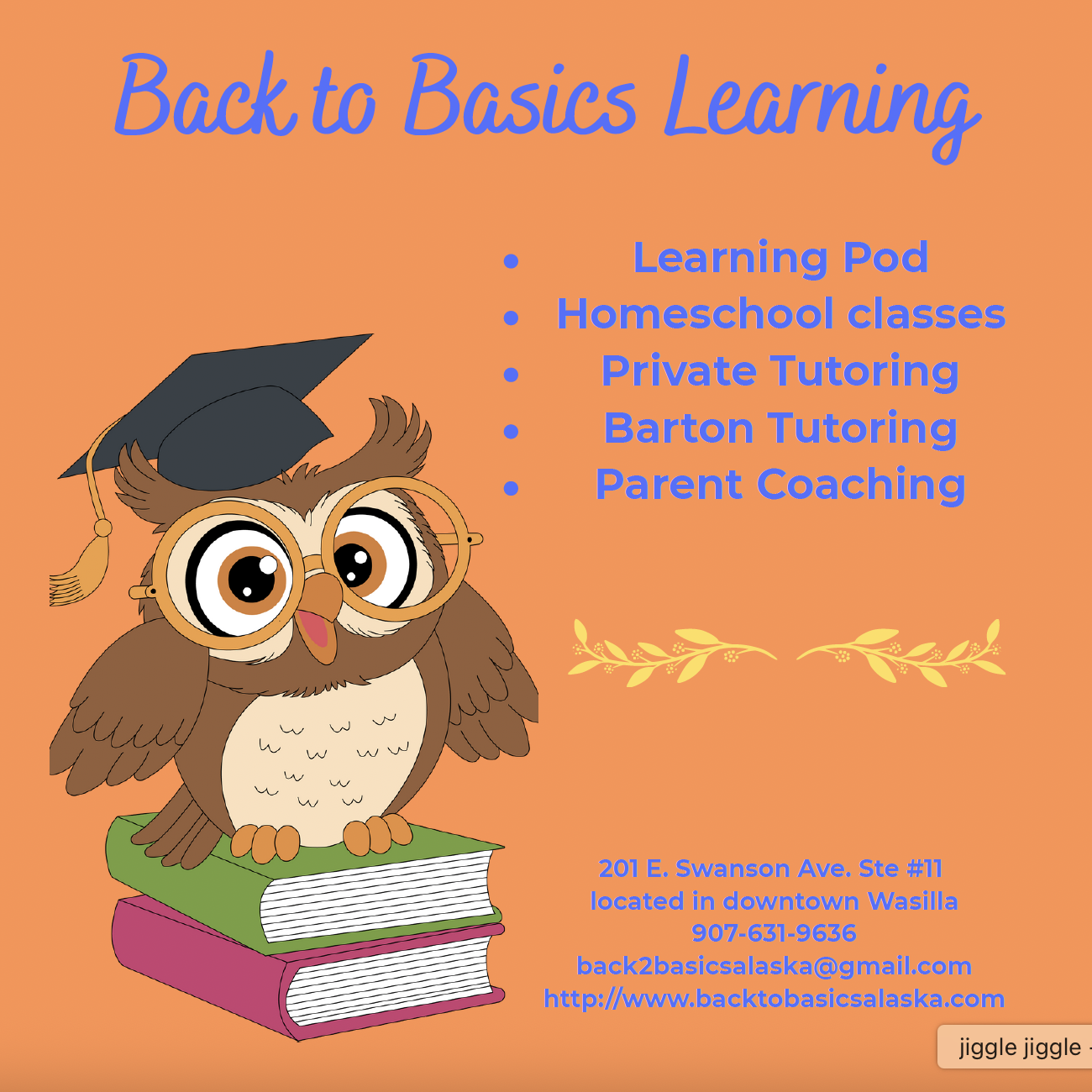Homeschooling
Is it for you?
By Amy Newman

Shanna Switzer knew she wanted to homeschool even before she got married.
“I just really liked the idea of my kids being able to pursue their own passions and interests,” says the Anchorage mom of four kids, ranging in age from 3 to 14. When her oldest was ready for kindergarten, that feeling hadn’t left.
“I had been a stay-at-home mom, and it just seemed natural to continue to keep them at home,” she explains. “It just felt right at the time.”
An increasing number of families feel the same. During the 2016-2017 school year, roughly 12,208 Alaskan children (9 percent) were enrolled in a public or private homeschool program; those numbers don’t include independent homeschool families, who aren’t required to report to the state.
“Homeschool is the new norm,” says Kerry Boyd, superintendent of the Yukon Koyukuk School District.
Choosing to homeschool can seem daunting, but for those who want an alternative to the traditional brick-and-mortar school, homeschool can be the path to school success.
Why homeschool?
The reasons to homeschool are as varied as the families who choose to do it, says Andrea Cottrell, director of Raven Homeschool and Distance Education. Some feel the traditional classroom setting isn’t a good fit for their child’s needs, while others enjoy the flexibility to explore passions and interests not always covered in a brick-and-mortar school. Whatever the reason, homeschool parents have the same goals as any other parent when it comes to their child’s education.
“They want (their children) to be successful, like any parent,” Andrea explains.
Families can homeschool through a public or private program, or independently. One benefit of homeschool programs is the built-in support, Andrea says. Advisory teachers and counselors, many of whom homeschooled their own children, are available throughout the year to provide teaching and general support to families.
Families enrolled in homeschool programs also receive a financial allotment for each child, which can be used to purchase educational materials.
“We can purchase curriculum, supplies or resources that are needed,” Andrea explains. The allotment can also help defray the cost of activities, such as field trips to museums or plays, provided the activity is aligned with the child’s academic goals, she adds.
Designing a homeschool educational program
One of homeschool’s primary attractions is the ability to design an educational program that meets the specific needs of each child, says Daryl Bowers, director of IDEA Homeschool.
“I think what’s unique and most alluring about homeschool is it allows every child the opportunity to have an education that is totally individualized and totally customizable,” he explains. “The thing that homeschooling allows is for a parent to choose a curriculum for their kid that meshes best with them.”
Independent homeschool families research and choose curricula on their own; families enrolled in a homeschool program work with advisory teachers to create an individualized learning program (ILP) that considers the family’s academic goals, the child’s learning style and any other needs before choosing a curriculum aligned with those needs, Daryl explains. As a child’s needs change, homeschooling’s inherent flexibility allows parents to change not only the curriculum, but its delivery as well, Kerry says. For example, students can enroll in college or traditional correspondence courses as they grow into more advanced subjects.
Socialization and homeschooling
Any discussion of homeschooling inevitably turns to the question of whether it affects a child’s social development. It’s a question that makes Shanna laugh.
“We have to really limit the things that we allow our kids to participate in because there are so many options out there,” she says.
Homeschool co-ops provide opportunities to participate in clubs, group activities, even lessons led by other parents, she says. And because her children aren’t spending six-plus hours per day sitting in a classroom, Shanna adds, they have more time to participate in extracurricular activities like dance.
The challenges of homeschooling
Like every aspect of parenting, homeschooling has its challenges. Establishing a routine and setting expectations is “easy peasy” for families whose kids are homeschooled from the start, says Daryl, but it can become more difficult if you begin when a child is older and becoming more independent.
If a parent is leaving the workforce to begin homeschooling the kids, the switch from a two-income to single-income household can be another huge adjustment, he adds. Accepting that homeschool success won’t happen in a day is another challenge.
Avoiding burnout from full-time parenting and teaching duties is another challenge, but Shanna says being proactive about taking time for herself and turning to her contact teacher and friends for support, guidance and encouragement helps keep her going.
The benefits, Daryl says, vastly outweigh the challenges.
“People are finding a lot of success in homeschool, not just academically and socially, but for their family,” he says. “They have more time to spend with the family and are less tired and frazzled.”
Do your homework
If you’re considering homeschooling, do some digging to find out what will fit your kids’ needs and wants best. Research online and call the programs.
“They should reach out and ask a lot of questions,” encourages Kerry Boyd of the Yukon Koyukuk School District. “And speak with other homeschooling families, or speak with the program itself.”
When considering homeschooling, remember that the choice doesn’t have to be permanent. “You can always change course,” says Shanna.
“You can always change your mind, so there’s no harm in seeing how it works for your family.”










